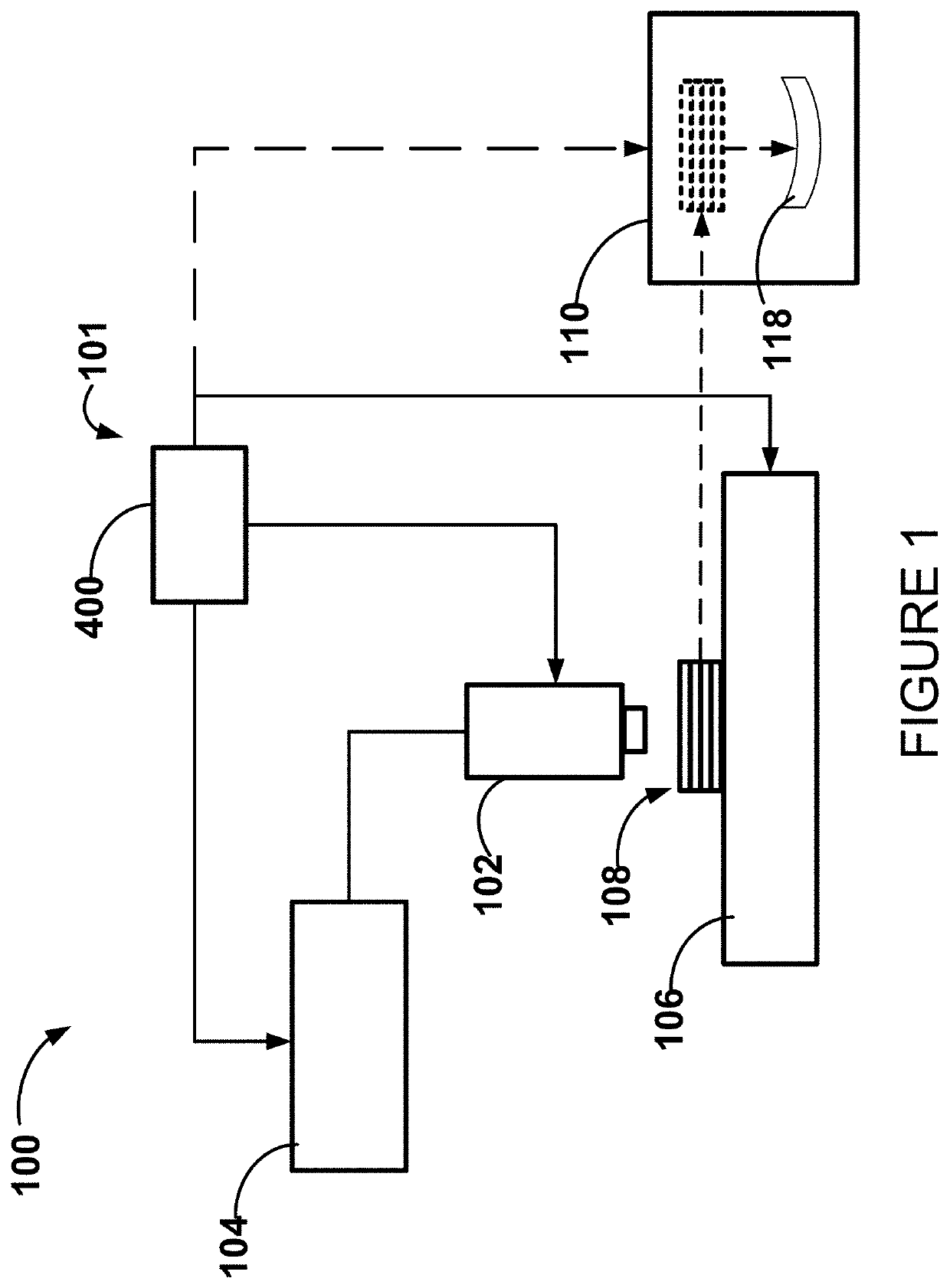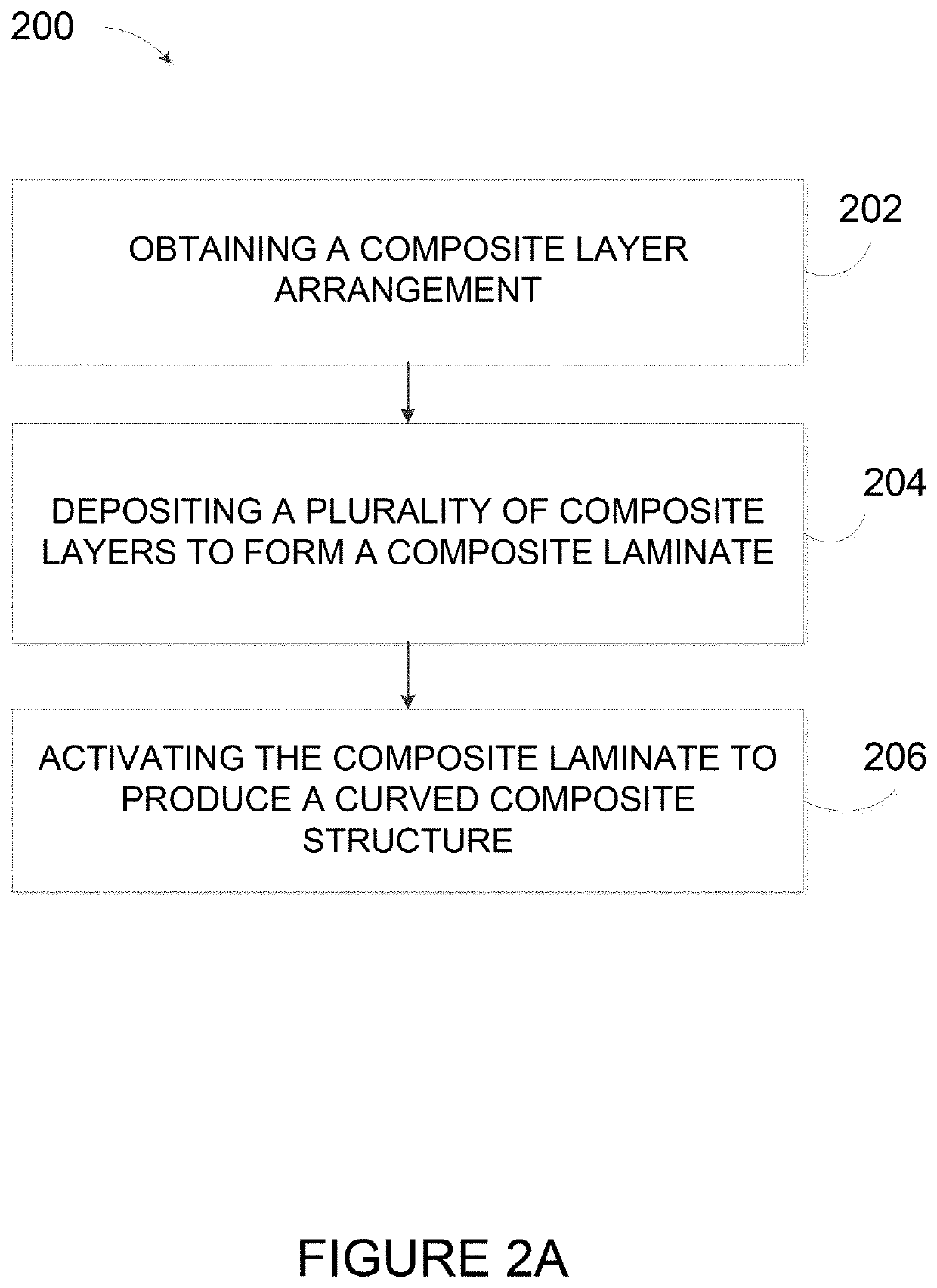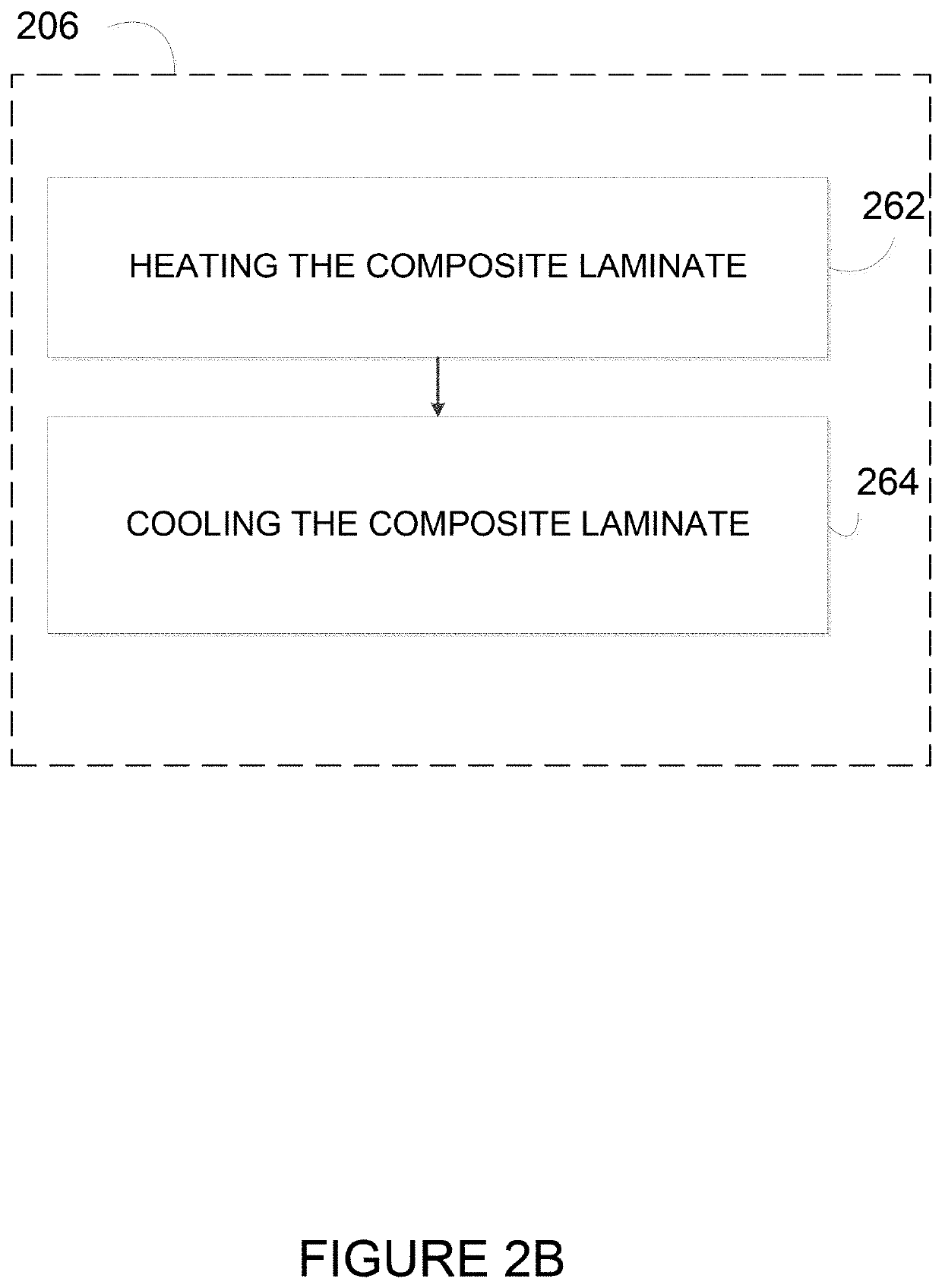Method and system for 4d printing of composites
a composite and four-dimensional technology, applied in the field of composite product manufacturing, can solve the problems of inability to meet the needs of manufacturing, etc., and achieve the effect of reducing production costs, avoiding manufacturing defects, and avoiding manufacturing defects
- Summary
- Abstract
- Description
- Claims
- Application Information
AI Technical Summary
Benefits of technology
Problems solved by technology
Method used
Image
Examples
Embodiment Construction
[0041]Methods and systems for four-dimensional (4D) printing of composites are described herein. More specifically, the manufacturing techniques described herein use 4D printing for producing a three-dimensional (3D) composite structure with curved feature(s) from a substantially flat stack of composite layers. By 3D printing of a substantially flat stack of composite layers and curing the substantially flat stack this may allow for manufacturing of a three-dimensional composite structure with curved feature(s) without using a mold having a corresponding shape and without 3D printing of complex shapes. This may allow for a reduction in manufacturing cost and / or time.
[0042]4D printing uses the same techniques of 3D printing through computer-programmed deposition of material in successive layers to create a 3D object. In addition, 4D printing adds the dimension of transformation over time. 4D printing may be used to produce a self-folding structure that can change its configuration un...
PUM
| Property | Measurement | Unit |
|---|---|---|
| Fraction | aaaaa | aaaaa |
| Fraction | aaaaa | aaaaa |
| Length | aaaaa | aaaaa |
Abstract
Description
Claims
Application Information
 Login to View More
Login to View More - R&D
- Intellectual Property
- Life Sciences
- Materials
- Tech Scout
- Unparalleled Data Quality
- Higher Quality Content
- 60% Fewer Hallucinations
Browse by: Latest US Patents, China's latest patents, Technical Efficacy Thesaurus, Application Domain, Technology Topic, Popular Technical Reports.
© 2025 PatSnap. All rights reserved.Legal|Privacy policy|Modern Slavery Act Transparency Statement|Sitemap|About US| Contact US: help@patsnap.com



